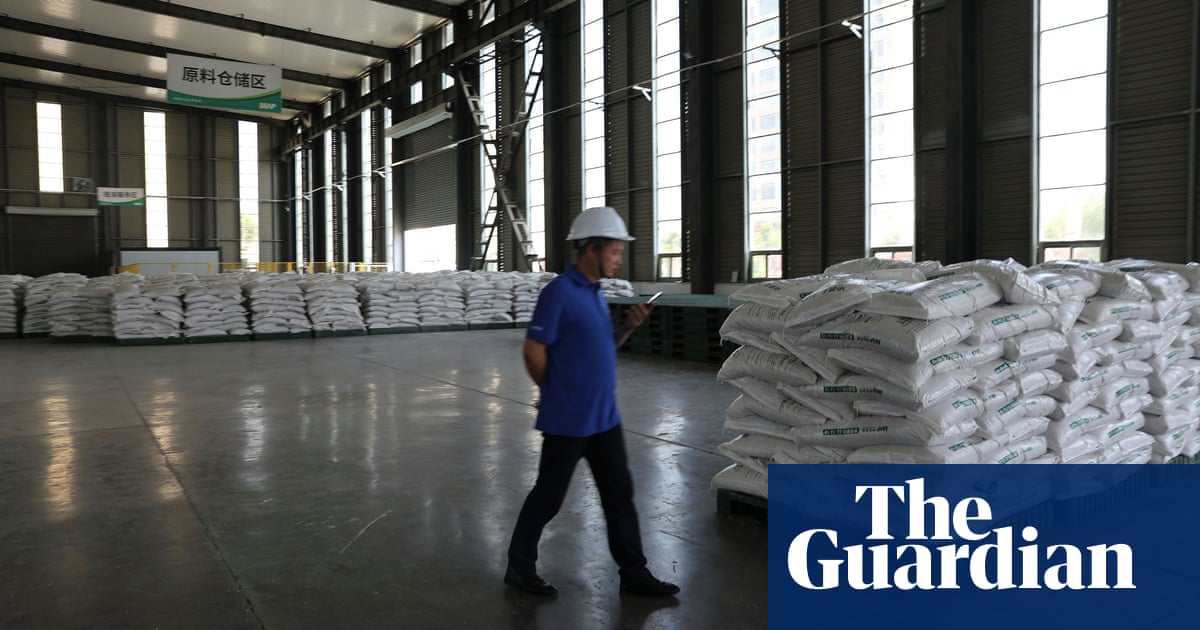Fertiliser prices hit new highs as multiple problems affect global supplies
Fertiliser prices have broken new records as global supplies are hit by multiple factors including reduced supplies from Russia and Belarus, disruptions to the supply chain, a China export ban and a Canadian rail strike.
“It’s a series of events we’ve never seen before and it continues to look like it’s going to get worse than better,” said Josh Linville, the director of fertiliser at the US commodity trader StoneX. “People thought the Russia-Ukraine war would be quick and Russia would be back out in the market and that’s not been the case.”
Prices for raw materials that make up the crop nutrient commodity market – ammonia, nitrogen, potash, urea, phosphates, sulphates and nitrates – have risen 30% since the start of the year, and are now higher than the levels reached during the food and energy crisis when prices jumped in 2008, according to CRU, a UK-based commodity consultancy.
Prices of Nola urea, one of the easiest fertiliser commodities to track, is trading at a 34-year high of $880 a US ton – in 2020 the price was $182. Prices are up 60% since Russia’s invasion of Ukraine on 24 February.
Linville said he was now witnessing grain prices moving in response to fertiliser prices, not vice versa. “It’s something we’ve never seen before,” he said. “It’s new territory for everybody who has ever been in this market.”
Grain prices have been volatile since Russia’s invasion of Ukraine as importers are heavily reliant on supplies shipped from the Black Sea region.
Russian fertiliser companies have not been hit with sanctions, through a number of Russian executives connected to the industry have been placed on sanctions lists. The country’s industry and trade ministry on 4 March recommended that its producers temporarily halt fertiliser exports.
The ban was largely symbolic, however, since most of the country’s fertiliser exports move through ports disrupted by the conflict in Ukraine.
Belarus, which exports potash through Lithuanian ports, was hit with export sanctions after it permitted Russian troops to stage and enter Ukraine across its borders. Russia and Belarus are the world’s second- and third-largest producers of potash, a key ingredient for producing nitrogen-containing fertilisers, after Canada.
“There’s a sheer logistical problem of how to get it out of Baltic and the Black Sea ports, it’s difficult to find buyers because people don’t want to engage with Russian companies,” sai Mike Nash at the commodity market analyst Argus.
“The logical conclusion to this is demand destruction,” he adds. “I don’t see any change while this conflict continues.”
Last year, China tightened its controls on exports of fertilisers, primarily nitrogen and phosphate, effectively shutting off the supply to the global market through to June this year to try to limit a rise in domestic food prices.
Beijing’s move exacerbated a shortage of global supplies and helped contribute to a surge in prices across international markets. According to Nash, the likelihood of China lifting restrictions in June is remote.
While the loss of Chinese, Russian and Belarusian exports have pushed fertiliser prices up further, a labour dispute at Canadian Pacific Railways is expected to aggravate shortages.
Canada’s Nutrien Ltd, the world’s biggest fertiliser producer, said it could weather a freight shutdown lasting a few days but a longer shutdown would force it to consider slowing potash production. The company said last week it planned to increase potash output by nearly 1m tonnes this year to about 15m tonnes in response to the uncertainty of supply from eastern Europe.











